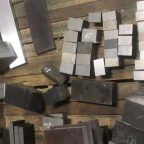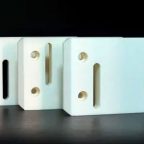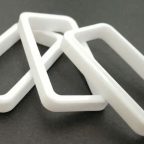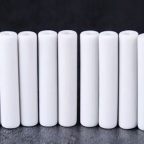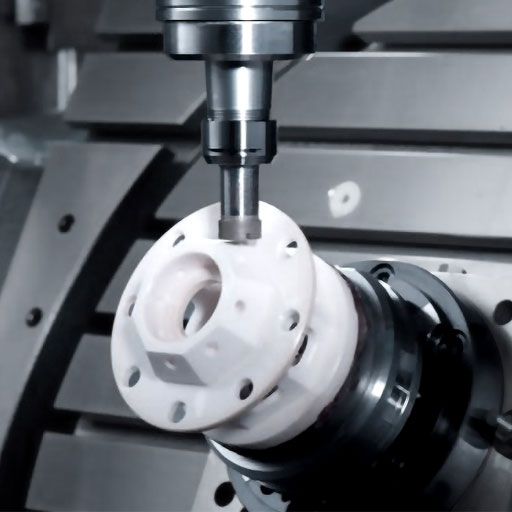Alumina ceramics is a kind of high temperature structural ceramics with the most extensive uses, the most abundant raw materials and the lowest price. Alumina raw materials are abundant in source and low in price. According to the composition, it can be divided into two categories: alumina porcelain and high-alumina porcelain.
Generally, the alumina content in alumina ceramics is more than 99%, and the sintering temperature is high. When the raw material particle size is coarse, the sintering temperature can reach 1700 ° C. In order to improve the sintering performance and reduce the sintering temperature, a small amount of MgO, Cr2 03, TiO2, etc. are often added as The sintering aid is used to generate solid solution or grain boundary phase to activate the crystal lattice and inhibit the growth of grains, thereby promoting sintering. The sintering of ceramic materials belongs to the solid phase sintering mechanism. The main crystal phase of the sintered material is corundum phase, and the performance is better. Alumina ceramics have the following characteristics:
- ① high mechanical properties;
- ② high resistivity;
- ③ high hardness;
- ④ high melting point, corrosion resistance;
- ⑤ excellent optical properties;
- ⑥ ionic conductivity.
High-alumina porcelain generally refers to 95 porcelain, 90 porcelain, 85 porcelain, 75 porcelain and other ceramics with different alumina contents, adding different amounts of silicate liquid phase sintering aids or other substances, so the sintering temperature is low, and the material properties Compared with alumina porcelain, it has also declined. According to the content of the main crystal phase generated, it is divided into corundum porcelain, corundum-mullite porcelain, and mullite porcelain.
Zirconia ceramics
Zirconia has three crystal forms: cubic (Cubic), tetragonal (Tetragonal) and monoclinic (Monoclinic). The monoclinic phase is a low-temperature stable phase. If it is heated to above 1000 ° C and transformed into a tetragonal phase, the temperature continues to rise to 2370 ° C. is transformed into a cubic phase.
- Crystal structure and martensitic transformation of zirconia ceramics
- Toughening mechanism of zirconia transformation
The transformation toughening mechanism of zirconia is mainly divided into stress-induced transformation toughening and microcrack toughening.
- Stress-induced transformation toughening.Under the action of stress, the tetragonal zirconia particles undergo a transformation to a monoclinic phase. As the phase transformation progresses, it is accompanied by volume expansion and shear strain, and absorbs energy to increase the crack propagation resistance and play a role in toughening.
effect. - Micro-crack toughening. At the service temperature, if the ZrO2 grains are larger than the critical grain size, the tetragonal phase grains will spontaneously change into the monoclinic phase, and many microcracks or crack nuclei will be generated around them due to the volume expansion. When they are in the action area before the main crack When they extend and release part of the strain energy of the main crack, they increase the energy required for the main crack to expand, thereby effectively preventing the crack propagation and improving the fracture toughness of the material. The elastic strain energy of the material is mostly converted into the new generation of microcracks surface energy.
- Types and characteristics of zirconia ceramicsAccording to the stability of the phase structure, zirconia ceramics are divided into stable ZrO2 ceramics and partially stabilized ZrO2 ceramics. Zirconia Pintejin Industrial Ceramics Factory is an expert in structural ceramics. Structural ceramics, factory direct sales, and price advantages
Pintejin machining ceramic service include : Alumina Ceramic Parts, Zirconia Ceramic, Silicon Carbide Ceramic, CNC Machined Aluminum Nitride Ceramic, Machinable Ceramic Parts, Glass Ceramic,Macor Ceramic,Powder Metallurgy Dies,Ceramic Injection Molding,Ceramic Dry Pressing,Ceramic Extrusion Dies
